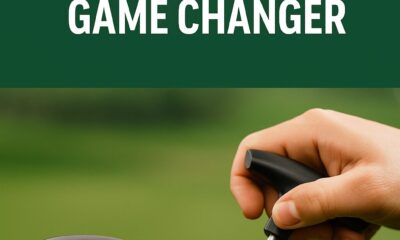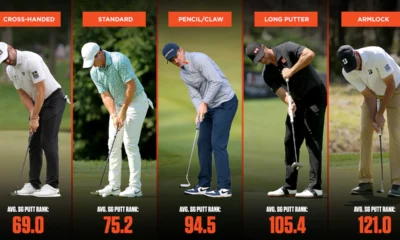Blog
Essential Golf Accessories Every Player Should Own
Uncover the hidden gems in golf equipment that can transform your game.
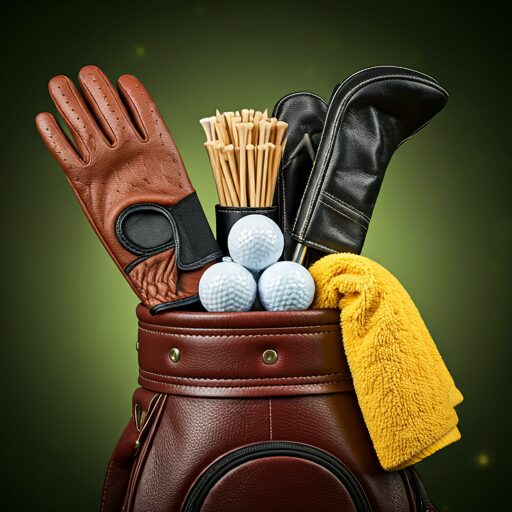
As a golf product reviewer, I’ve seen it all: the latest drivers, the most forgiving irons, and the fanciest putters. But while these clubs can certainly improve your game, there’s a whole other category of golf equipment that’s equally important: accessories.
The right accessories can make your round more enjoyable, more efficient, and even help you play a little better. Here’s a look at a few essential golf accessories that every player should own:
- A good rangefinder or GPS watch: Knowing the distance to the pin is crucial for accurate shot selection. A rangefinder is a great option, but a GPS watch can provide even more information, like yardages to hazards and layups.
I recommend the Bushnell Pro XE Rangefinder or the Garmin Approach S62 GPS Watch.
- Divot repair tool: It’s important to repair your divots and pitch marks to help keep the course in good condition for everyone. A divot repair tool is a small, inexpensive tool that makes this easy to do.
I recommend the True Linkswear Divot Repair Tool or the Callaway Golf Divot Repair Tool.
- Ball markers: These small discs are used to mark the spot on the green where your ball is before you lift it to repair a ball mark or putt. You can get ball markers in a variety of colors and styles to suit your personality.
I recommend the Titleist Pro V1 Ball Markers or the Callaway Golf Chevron Ball Markers.
- Tees: You’ll need tees to get your ball off the ground on most par 3s and some par 4s. There are different lengths of tees available, so be sure to choose the right ones for the course you’re playing.
I recommend the Callaway Golf Tour Tees or the Titleist Pro V1 Tees.
- Golf balls: This might seem like a no-brainer, but it’s worth mentioning. There are a variety of golf balls on the market, so it’s important to choose ones that are right for your skill level and swing speed.
I recommend the Titleist Pro V1 Golf Balls or the Callaway Chrome Soft Golf Balls.
- Sunscreen and a hat: Spending hours in the sun can be dangerous, so be sure to protect yourself with sunscreen and a hat. A wide-brimmed hat will help to keep the sun off your face and neck.
I recommend the Neutrogena Ultra Sheer Dry-Touch Sunscreen SPF 100 or the Sunday Afternoons Ultra Adventure Hat.
- Sunglasses: Sunglasses will help you to see the ball better on a bright day. They can also help to reduce glare, which can make it difficult to line up your shots.
I recommend the Oakley Flak 2.0 XL Sunglasses or the Ray-Ban Wayfarer Sunglasses.
- Comfortable shoes: You’ll be walking a lot during a round of golf, so it’s important to wear comfortable shoes. Look for shoes that are designed for golf, with good traction and support.
I recommend the FootJoy Pro/SL Golf Shoes or the Adidas Tour360 XT-SL Golf Shoes.
- A comfortable glove: A golf glove will help you to grip the club better and prevent blisters. There are different types of gloves available, so be sure to choose one that fits you well.
I recommend the Titleist Players Golf Glove or the Callaway Golf Tour Glove.
- Towel: A towel is handy for drying off your clubs after you hit a shot from the wet grass or sand. It can also be used to wipe sweat from your brow on a hot day.
I recommend the Titleist Microfiber Towel or the Callaway Golf Microfiber Towel.
These are just a few of the essential golf accessories that every player should own. By having the right gear in your bag, you can make your round more enjoyable and help yourself play your best golf.
In addition to the essential items listed above, there are a few other accessories that can be helpful depending on your individual needs. For example, if you tend to get cold easily, you might want to consider investing in a hand warmer or a rain jacket. And if you like to listen to music while you play, a portable speaker can be a great way to add some enjoyment to your round.
Ultimately, the best golf accessories are the ones that help you improve your game and have more fun on the course. So experiment with different products and find the ones that work best for you.
I hope you found this article helpful!
In addition to the above essential accessories, here are a few other items that you might find useful:
- Headcovers: Headcovers help to protect your clubs from damage during transport.
I recommend the Titleist Headcovers or the Callaway Golf Headcovers.
- Ball retriever: A ball retriever can be a lifesaver if you hit your ball into a lake or pond.
I recommend the Ram Golf Ball Retriever or the Callaway Golf Ball Retriever.
- Sand wedge: A sand wedge is a specialized club that is designed for playing out of sand traps.
I recommend the Callaway Golf Jaws Raw Wedges or the Titleist Vokey SM9 Wedges.
- Pitching wedge: A pitching wedge is another specialized club that is used for short approach shots.
I recommend the Callaway Golf Jaws Raw Wedges or the Titleist Vokey SM9 Wedges.
- Golf bag: You’ll need a golf bag to carry your clubs and accessories.
I recommend the Callaway Golf Org 14 Cart Bag or the Titleist Players 4 Plus Stand Bag.
With all of this great gear in your bag, you’ll be ready to take your game to the next level!
I would also like to add that I am not affiliated with any of the companies mentioned in this article. I am simply providing my opinion on what I believe are the best golf accessories available.
I hope this article helps you choose the right golf accessories for your needs.
Blog
The Art of the Unsolicited Golf Tip: How to Annoy Your Playing Partners with Wisdom
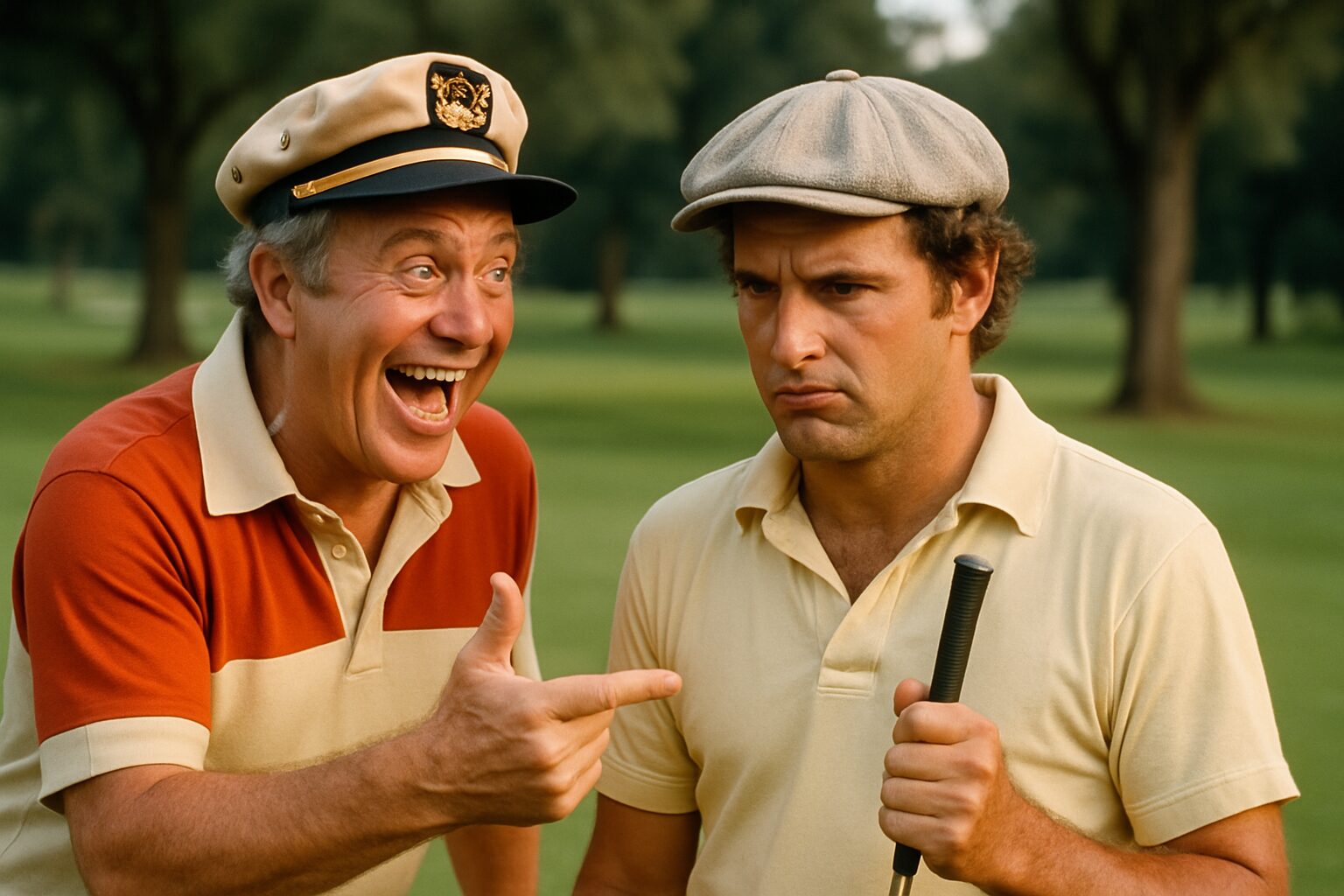
There’s a certain breed of golfer, a truly special individual, who believes that every swing, every putt, every moment on the course is an opportunity for unsolicited advice. They are the self-appointed gurus of the green, the unsolicited senseis of the sand trap. And while most people recoil from such an individual, I, Ty Webb, find a certain perverse charm in their relentless, often misguided, generosity. After all, what is golf if not a canvas for human folly, painted with strokes of well-intentioned, yet utterly useless, wisdom?
Consider the scenario: your playing partner, a man (or woman) of quiet desperation, is about to address the ball. Their brow is furrowed, their stance is tentative, their very soul is screaming for a moment of peace. And then, from the depths of your profound, albeit unrequested, knowledge, you unleash it: “Keep your head down!” Or, “Slow backswing!” Or, my personal favorite, delivered with a knowing wink, “Be the ball.” The effect is instantaneous. A subtle flinch. A barely perceptible sigh. The swing, already fraught with anxiety, becomes a tortured ballet of self-doubt. The ball, inevitably, finds its way into the deepest, darkest rough.
And that, my friends, is the art. The beauty of the unsolicited golf tip lies not in its efficacy, but in its disruption. It’s a gentle reminder that even in the serene confines of the golf course, chaos lurks. It’s a subtle assertion of dominance, a playful jab at the fragile ego of your fellow golfer. It’s a way of saying, without actually saying it, “I know more than you, even if I don’t.”
Of course, there are rules to this art. Never offer a tip when someone is actually asking for one; that would be far too helpful, and thus, entirely counterproductive. Always deliver your wisdom with an air of profound nonchalance, as if the secret to a perfect swing has just casually occurred to you while contemplating the existential dread of a missed putt. And most importantly, never, ever, acknowledge the catastrophic results of your advice. A shrug, a thoughtful nod, perhaps a mumbled, “Well, that’s golf,” is all that’s required.
So, the next time you’re on the course, and you see a fellow golfer struggling, resist the urge to be genuinely helpful. Instead, embrace the art of the unsolicited golf tip. For in the gentle torment of your playing partners, you will find a profound, if slightly mischievous, joy. And who knows, perhaps in their frustration, they will, inadvertently, discover their own path to enlightenment. Or at least, a new appreciation for silence.
Blog
Why Your Golf Balls Disappear (and It’s Not the Gophers)
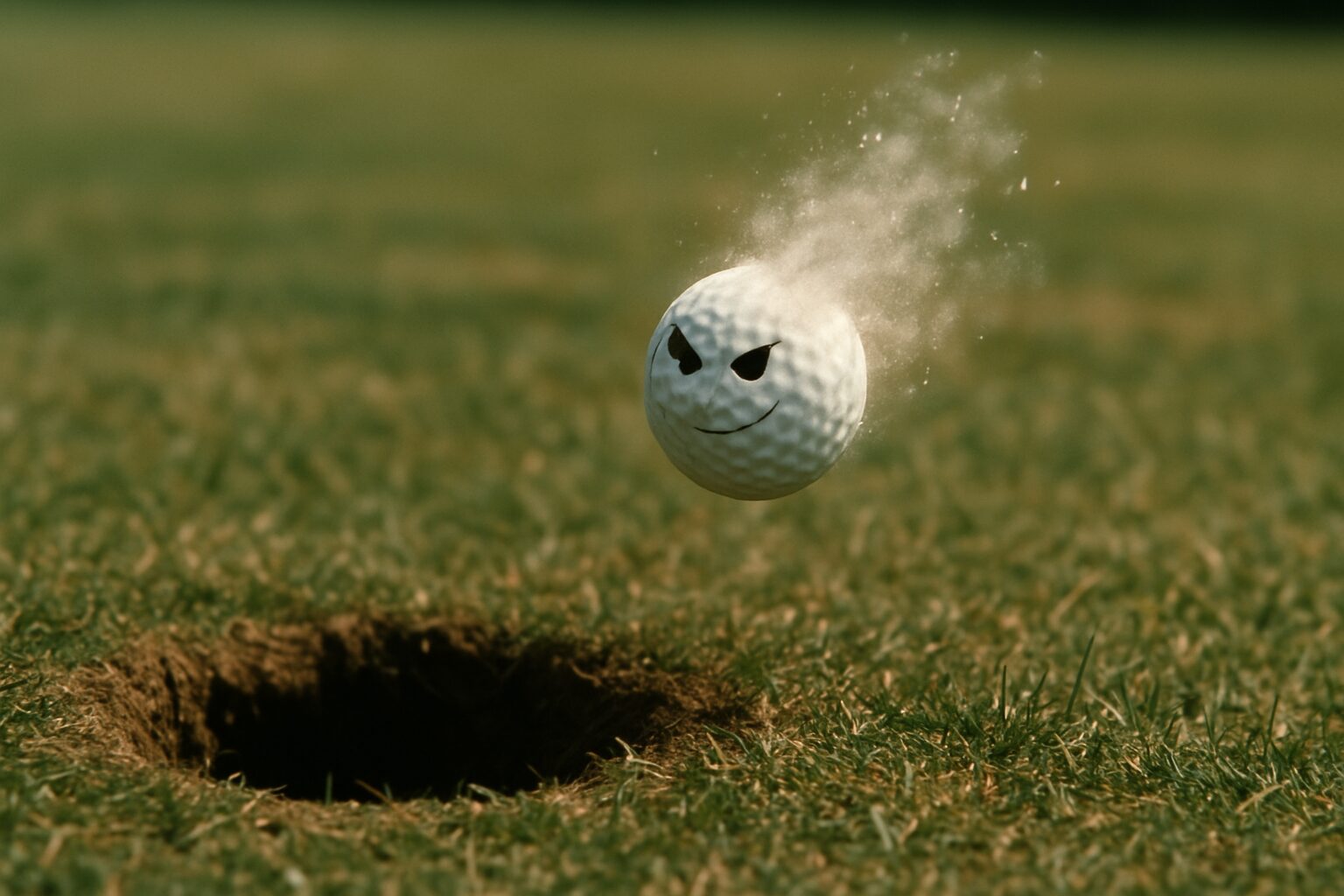
Ah, the vanishing golf ball. A phenomenon as old as the game itself, and one that has baffled, frustrated, and occasionally driven golfers to the brink of madness for centuries. Most theories involve gophers, those furry, subterranean saboteurs with an insatiable appetite for Titleists. Or perhaps a particularly aggressive squirrel, or a flock of unusually organized crows. But I, Ty Webb, have delved deeper into this mystery, and I can assure you, the truth is far more profound, and far more amusing.
Consider, if you will, the golf ball itself. A small, dimpled sphere, designed for one purpose: to be struck with great force and sent hurtling through the air. A life of constant abuse, of being smacked, sliced, and occasionally submerged in murky ponds. Is it any wonder, then, that some of these brave little spheres simply decide they’ve had enough? They yearn for freedom, for a life beyond the confines of the fairway. They dream of rolling unencumbered through fields of wildflowers, or perhaps, for the more adventurous among them, a quiet retirement in the depths of a particularly challenging water hazard.
I’ve seen it happen, you know. A perfectly struck shot, soaring through the air, destined for glory. And then, poof. Gone. Not a trace. No splash, no rustle in the bushes, just an empty space where a golf ball once was. It’s not a gopher, my friends. It’s an escape. A liberation. That golf ball, in its infinite wisdom, has chosen a different path. It has decided that its destiny lies not in the bottom of a cup, but in the boundless expanse of the unknown.
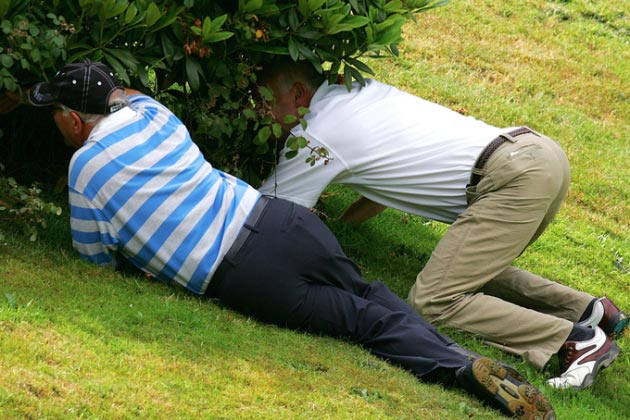
And who are we to judge? We, who are so obsessed with control, with precision, with the rigid rules of the game. Perhaps the golf ball, in its spontaneous disappearance, is teaching us a valuable lesson about letting go. About embracing the unexpected. About the inherent futility of trying to dictate the trajectory of a small, white sphere that clearly has a mind of its own.
So, the next time your golf ball vanishes into thin air, don’t curse the gophers. Don’t blame your swing. Instead, offer a silent salute to that brave little sphere, wherever it may be. For it has achieved what many of us can only dream of: true freedom. And who knows, perhaps one day, it will return, laden with tales of its adventures, ready to impart some profound, dimpled wisdom upon us all.
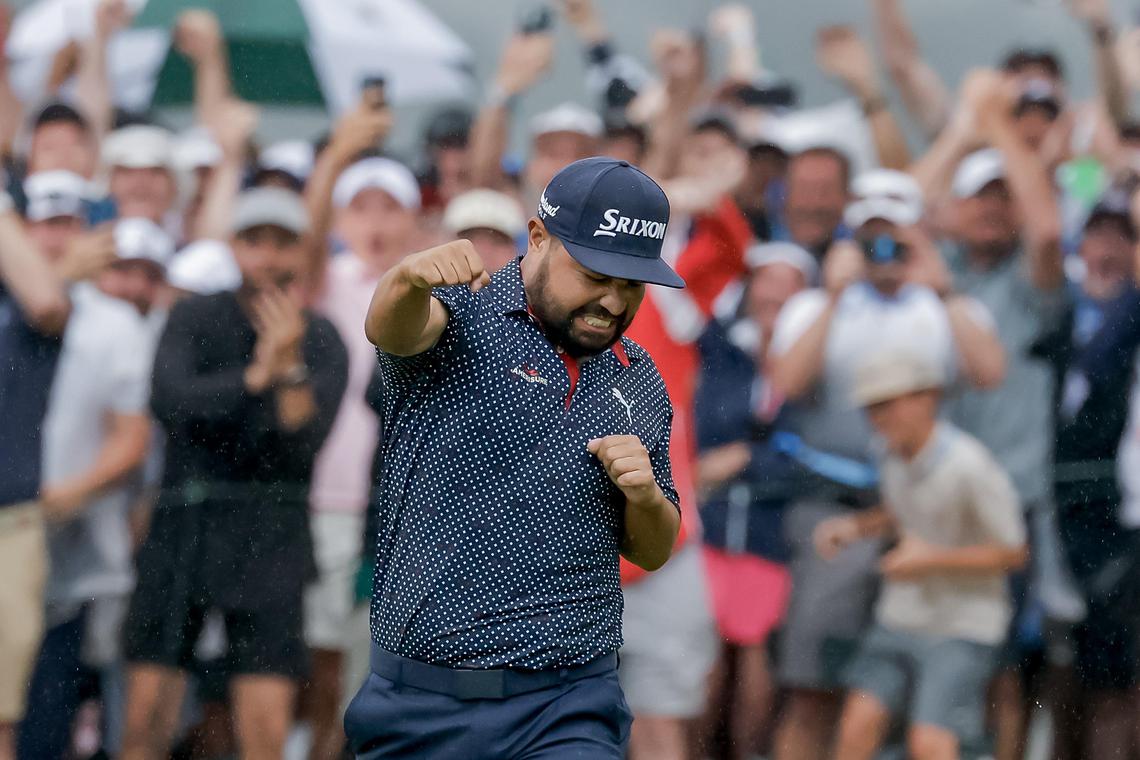
When JJ Spaun stood over a 64-foot birdie putt on the 72nd hole of the 2025 U.S. Open at Oakmont, few could have predicted what would come next. The ball meandered across the slick green, trickling over every contour, picking up speed at the crest, and then—like it had GPS—dropped center cup. Spaun dropped his putter, raised his arms, and the crowd erupted. With that single stroke, he claimed his first major title in one of the most dramatic finishes in U.S. Open history.
But how does Spaun’s putt stack up against other legendary finishes in the tournament’s storied past? Let’s break down some of the most iconic moments and see where this one lands.
1. Payne Stewart – 1999 U.S. Open at Pinehurst
Perhaps the most iconic putt in U.S. Open history came from Payne Stewart, who nailed a 15-footer for par on the 18th to win by one over Phil Mickelson. The pose—fist pump and outstretched leg—has since been immortalized in a statue at Pinehurst. What made it legendary wasn’t just the putt—it was the context: Stewart’s final major before his tragic death just months later.
Verdict: Iconic and emotional. Spaun’s putt was longer, but Stewart’s was more poetic.
2. Tiger Woods – 2008 U.S. Open at Torrey Pines
Woods drained a 12-foot birdie on the 72nd hole to force a playoff with Rocco Mediate—while basically playing on one leg. That tournament went to sudden death after an 18-hole playoff, and Tiger prevailed. This was peak Tiger drama, pain and all.
Verdict: Spaun’s putt was longer, but Tiger’s win was sheer willpower and mystique.
3. Jack Nicklaus – 1972 U.S. Open at Pebble Beach
With a 1-iron shot that hit the flagstick on 17 and a crucial birdie putt on 18, Jack sealed a dominant win. His precision and timing under pressure showed why he’s the GOAT.
Verdict: Not a putt for the win, but a signature finishing statement from Jack. Spaun’s was more electric in terms of pure putter drama.
4. Ben Hogan – 1950 U.S. Open at Merion
Hogan’s 1-iron into the 18th fairway and the par to force a playoff—just 16 months after a near-fatal car crash—remain legendary. He won the playoff and completed one of golf’s great comeback stories.
Verdict: Larger-than-life comeback. Spaun’s putt had more flair, but Hogan’s win was heroic.
5. JJ Spaun – 2025 U.S. Open at Oakmont
Let’s not underestimate what Spaun accomplished. The pressure was immense. He wasn’t the favorite. And on the most treacherous greens in golf, he buried a 64-foot bomb—a putt most players would be happy to lag to within 5 feet—to win the U.S. Open outright.
Verdict: For distance, surprise, and drama, Spaun’s putt may be the most shocking winning stroke in U.S. Open history.
Final Thoughts
JJ Spaun may not have the résumé of a Nicklaus or Woods, but for one Sunday afternoon in June 2025, he created a moment that will live in golf lore forever. Spaun’s putt was longer than Stewart’s, more unexpected than Tiger’s, and more dramatic than any final-hole finish in recent memory.
In terms of pure clutch putting? It might just be the greatest walk-off in U.S. Open history.
-

 Product Review6 years ago
Product Review6 years agoThe Perfect Practice Putting Mat Review by Jason Tenzer
-

 Blog4 years ago
Blog4 years agoLoophole Rule Offers PGA Tour Pros a Mulligan
-

 Blog4 years ago
Blog4 years ago2021 Buyer’s Guide: The Top 10 Value Golf Balls For Distance & Feel
-

 Blog4 years ago
Blog4 years agoGolf Marriage Counselor
-

 Blog6 years ago
Blog6 years ago9 Biggest Chokes Of The Past Decade
-

 Product Review6 years ago
Product Review6 years agoTHE ADJUSTABLE IRONS: WALKING STICKS GOLF CLUBS
-

 Blog4 years ago
Blog4 years agoWhat Your Golf Clubs Say About You
-

 Equipment6 years ago
Equipment6 years agoOHK Sports Interview by Jason Tenzer



